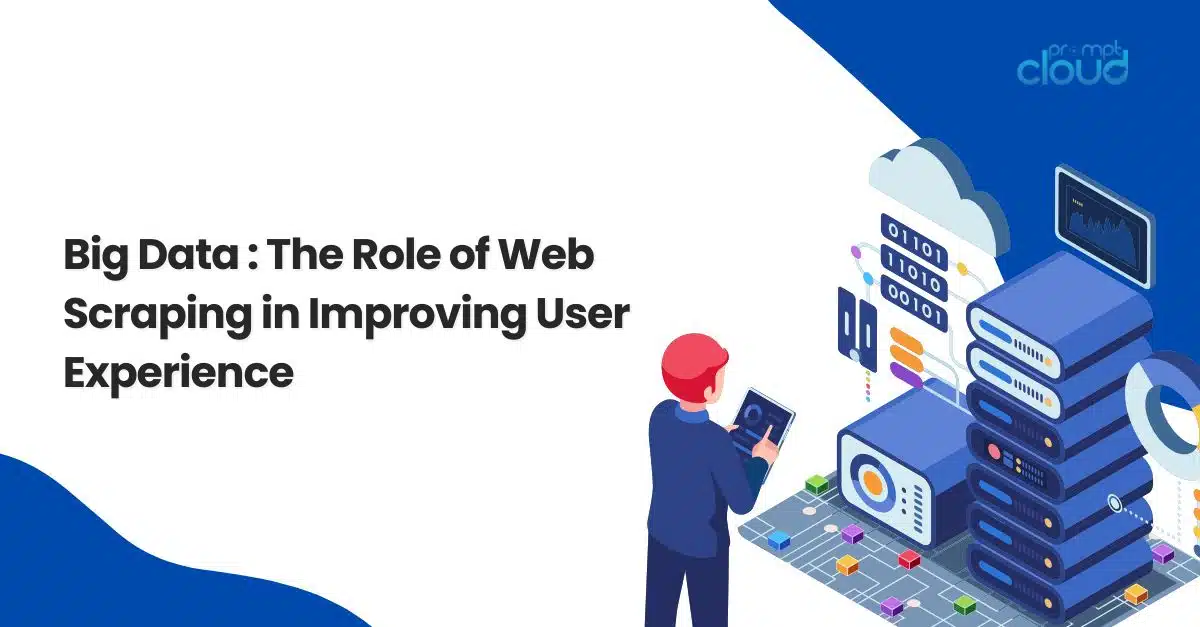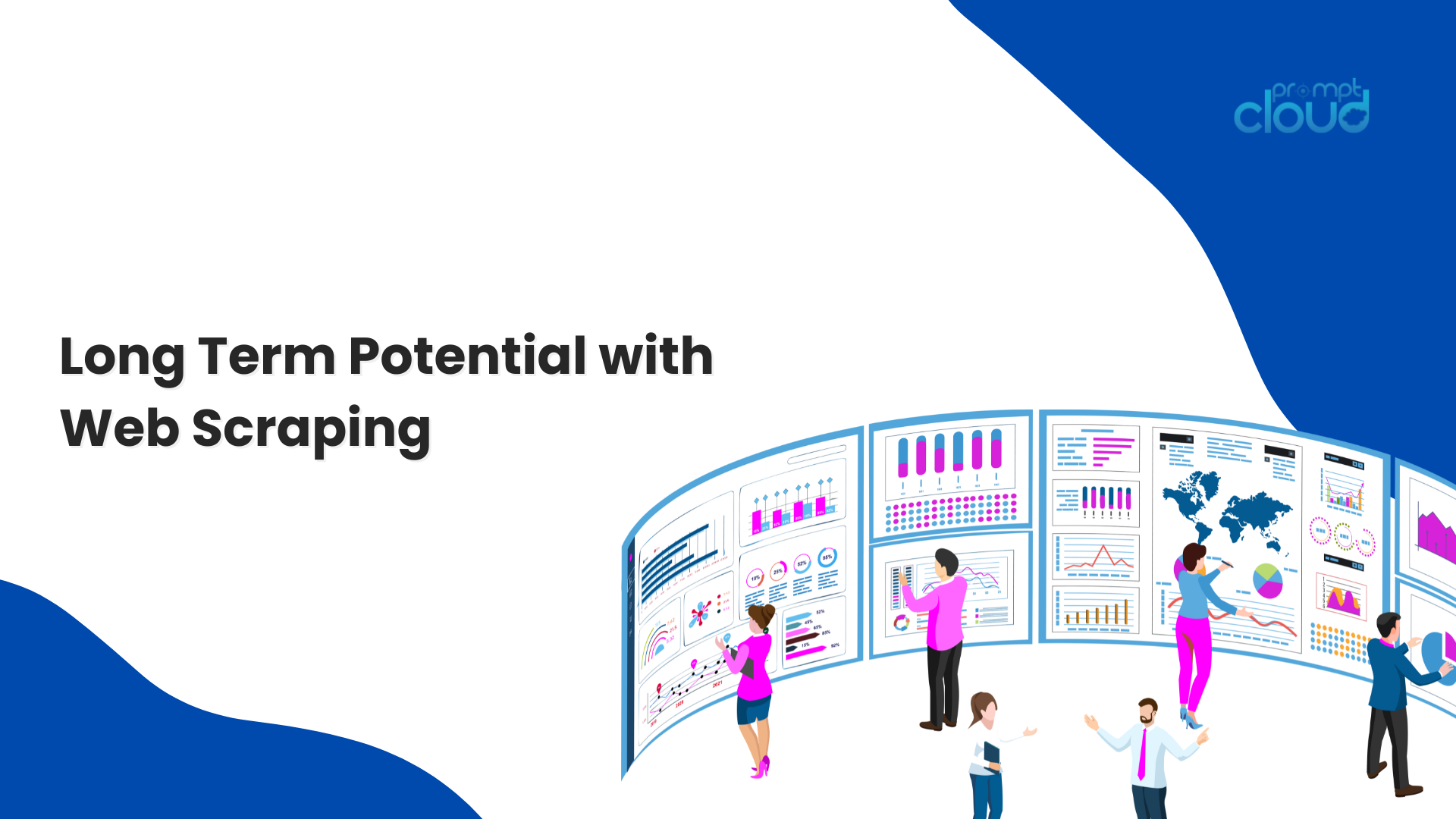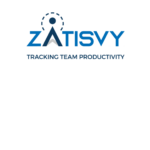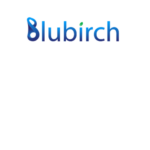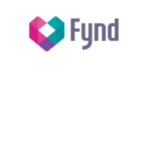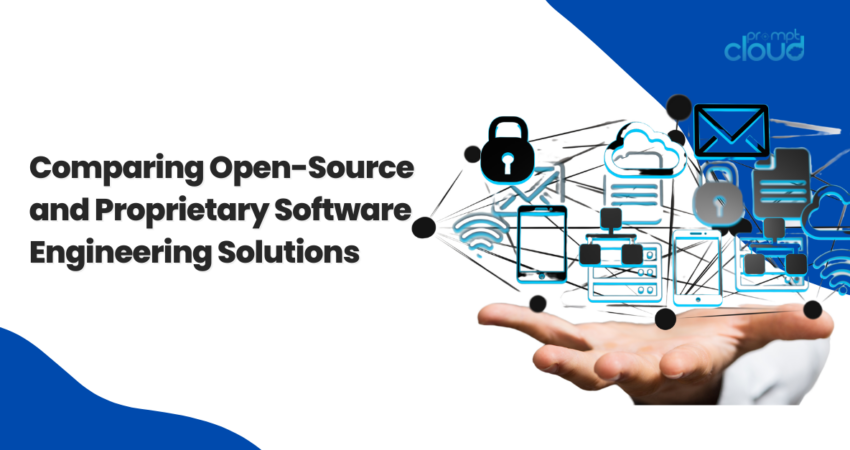
Software engineering solutions empower businesses and organizations to develop applications and systems that solve problems and enhance productivity. Two major categories of solutions exist in the marketplace – open-source and proprietary. Understanding the key differences between these two models helps technology leaders select the best approach for their needs and budgets.

Defining Open-Source and Proprietary Software
Open-source software provides users access to the source code, allowing them to freely use, modify, and distribute the software based on open-source licensing terms. The open-source community collaboratively develops projects, often driven by universities, nonprofit foundations, and volunteers.
In contrast, proprietary software restricts access to the underlying source code, which is solely owned and controlled by a company or vendor. Users must agree to specific licensing agreements and pay fees to utilize proprietary software. Vendors fully support and maintain proprietary tools, platforms, and applications.
Comparing Development Processes
Open-source software engineering solutions utilize collaborative, community-based development environments. Thousands of programmers scattered across the world collectively work on enhancing open-source solutions. This decentralized process allows for rapid innovation as developers build on one another’s code.
Proprietary software follows more traditional, centralized development cycles led by vendors. Company employees plan roadmaps, engineer new features, fix bugs, and regulate release schedules. This closed process enables vendors to control quality and releases.
Evaluating Total Cost of Ownership
Acquiring open-source software has no upfront licensing fees since the solutions and source code are free to access. However, integrating, managing, and maintaining open-source platforms requires investments in skilled labor. Lacking vendor support can also lead to higher operating costs long-term.
Proprietary software requires significant upfront capital expenditures and ongoing license fees. Yet the total cost of ownership may balance out through official vendor support, training resources, and automated updates. Companies must model total cost projections to determine the best value.
Assessing Platform Security
The decentralized nature of open-source technologies risks exposing potential vulnerabilities that malicious actors could exploit. Without formal audits and controls, open-source communities depend on contributors to identify and resolve security defects.
Conversely, proprietary vendors dedicate extensive resources toward identifying and fixing security flaws in the solutions they develop. Rigorous testing procedures combined with automated monitoring tools help vendors achieve advanced security certifications that verify platform protections.
Comparing Platform Integrations
Most open-source projects are fragmented and disjointed, leading to complex integrations between tools and systems. Successfully connecting open-source software with other endpoints requires significant expertise and customization efforts.
Proprietary vendors design solutions to seamlessly integrate within existing technology ecosystems. Vendors prioritize building connectors, APIs, and out-of-the-box configurations to save customers time and labor integrating platforms.
Evaluating Innovation Capabilities
By permitting anyone to enhance open-source projects iteratively, this collaborative development environment fuels cutting-edge innovations. Open-source communities breed creativity and foster breakthroughs that disrupt entire industries.
Proprietary software vendors employ some of the best engineers, but still represent only a fraction of the collective skill applied to advancing open-source solutions. Without widespread peer review and collaboration, proprietary vendors struggle matching the exponential pace of open-source innovation.
Assessing Platform Support
While online forums provide some level of crowd-sourced support, open-source solutions generally lack formal customer service and expert assistance provided by solution vendors. Resolving complex technical issues often requires hiring expensive specialized consultants.
Proprietary software vendors include professional support and services with licensing agreements. Customers pay for the privilege of accessing 24/7 help resources, online training content, knowledge bases, and expert troubleshooting when problems arise.
Examining Adoption and Usage
Open-source solutions rely on grassroots marketing and word-of-mouth advocacy to drive adoption. Developers choose to experiment with open-source platforms based on community reviews and the quality of documentation available. This organic adoption tends to foster highly loyal users.
Proprietary vendors employ sales teams and marketers to promote solutions to prospects and actively and aggressively convert customers. Without organic evangelists, proprietary platforms experience more fickle user bases that frequently switch solutions, chasing the next best offer.
Comparing Platform Extensibility
The accessibility of open-source source code enables developers to customize solutions to meet unique needs fully. Engineers can add, remove, or enhance any capabilities baked into open-source platforms without restrictions.
Proprietary vendors selectively expose APIs and other extension mechanisms that narrowly define how customers can customize solutions. Vendors fear modifications that could degrade system performance or create future upgrade challenges, limiting extensibility.
Evaluating Interoperability Forces
Open source standards and specifications enable software from different vendors and projects to share and exchange information seamlessly. Developing open-source software fosters interoperability to simplify interconnected system deployments.
Proprietary vendors often create closed systems and incompatible technologies that force customer lock-in. Some vendors develop proprietary standards designed to limit interoperability in an effort to protect market share and prevent customer defection to rivals.
Study Comparing Efficiency Metrics
A 2021 study compared key efficiency metrics between proprietary and open-source software development projects across 23,000 repositories. The research found open-source projects exhibited greater productivity in terms of pull requests merged per day and new contributors onboarded.
However, proprietary projects demonstrated greater predictability and stability regarding release cycles and roadmap delivery. The structured engineering teams, formal processes, and reliable resources benefited proprietary software progress tracking.
Researching Business Value Creation
Leading research firm McKinsey & Company surveyed IT executives across industries to compare open-source and proprietary platforms in terms of creating business value. The survey found open-source solutions generate 2-3x more value on average in application development and infrastructure use cases.
Proprietary software creates slightly more value for analytics and business intelligence use cases. The research confirms enterprises extract tremendous value using open-source software, often matching or exceeding the business impacts of paid proprietary solutions.
Evaluating Cultural Fit
Many developers find that open-source communities have a certain collaborative, transparent, grassroots governance that appeals to them. Programmers who want to advance leading edge innovations will find that contributing to open source projects gives a sense of purpose and empowerment.
However, the loose oversight of open-source development gets on the nerves of developers looking for structure, standards and accountability. Engineers are given controlled environments by proprietary software vendors, who prefer defined processes and reliability over unbridled creativity.
Comparing Platform Accessibility
The free availability of open-source software makes solutions accessible for cash-strapped startups and nonprofits. Open-source technologies help these organizations stretch limited resources. Without upfront licensing costs, groups can reallocate budgets to other business priorities.
Proprietary solutions often prove cost-prohibitive for many smaller organizations, limiting accessibility for startups and causes. The high capital costs and ongoing fees block innovation opportunities. However, some vendors offer free or discounted tools for startups and nonprofits to increase access.
Examining Vendor Incentives
Open-source communities care more about advancing technology than making money. Instead, project contributors freely invest their time to improve platforms to scratch their creative itch rather than earning more. It’s about innovation over profits, and that’s good for the users.
On the other hand, proprietary software vendors correlate sales and licensing to company profits and investor returns. This incentive structure encourages vendors to maximize revenues by blocking access to software innovation already done rather than solving customer problems.
Evaluating Legal Protections
Open-source licensing agreements ensure user rights and prevent predatory vendors from restricting access to freely available source code. All stakeholders in open-source ecosystems benefit from shared legal protections designed to foster continued collaboration.
Proprietary vendors provide limited legal protections for users and lock down usage rights through restrictive end-user agreements. These closed licenses protect vendor intellectual property at the expense of limiting customer controls and flexibility over the software solutions they rightfully purchased.
Assessing Vendor Viability
The decentralized nature of open-source projects limits exposure to corporate instability and change of control situations that disrupt proprietary software vendors. If any single contributor abandons an open-source effort, other community developers quickly fill the void to ensure continued viability.
Proprietary software vendors constantly face market volatility, acquisition fallout, management shakeups, and financial pressures that threaten solution viability and support continuity. Customers often suffer consequences from failing vendors who discontinue products or terminate expertise that disrupts existing software implementations.
Balancing Trade-Offs
The choice between open-source and proprietary software involves balancing trade-offs across solution quality, innovativeness, flexibility, security, support, and total cost considerations. Technology leaders must determine which factors hold the highest priority for their specific situation and assess how competing platforms compare accordingly.
Prioritize innovativeness, custom extensibility, and grassroots community governance? Then open-source solutions likely deserve strong consideration. Prefer structured processes, vendor supportability, and advanced security controls? Then proprietary software may best address these needs. Defining clear success metrics and evaluation criteria streamlines the platform selection process.
Best Practices for Leveraging Open-Source Solutions
Organizations maximizing returns from open-source software investments apply various best practices:
- Assign dedicated resources to actively participate in and contribute back to the open-source community to advance capabilities.
- Support employee contributions to open-source projects during working hours to attract and retain top talent.
- Develop internal expertise across key open-source solutions to optimize performance tuning and quickly resolve issues.
- Allocate a portion of cost savings from open-source software to fund ongoing community donations and custom enhancements.
- Sponsor open-source events, code-a-thons, and hackathons to demonstrate thought leadership and fuel innovation.
- Strategically integrate both open-source and proprietary solutions to balance trade-offs and optimize the total cost of ownership.
Emerging Innovations Fueling Open-Source Growth
Several emerging technology innovations continue accelerating open-source software adoption across enterprises:
- Cloud-native architectures: Containers, microservices, and serverless computing enable scalable deployments of open-source solutions.
- DevOps automation: CI/CD pipelines, infrastructure-as-code, and release orchestration streamline managing complex open-source application portfolios.
- Machine learning operations: Automated monitoring, alerting, and remediation help ensure high-performing, resilient, open-source solution delivery.
- Edge computing: Deploying open-source software closer to end-users and devices unlocks next-generation latency-dependent use cases.
- Blockchain decentralization: Cryptocurrency, NFTs, and decentralized autonomous organizations provide new models for community-governed open-source projects.
These innovations demonstrate the expanding value open-source software delivers across an enterprise technology stack.
Striking the Optimal Balance
Rather than treating open-source and proprietary solutions as an either/or proposition, leading organizations integrate both models to capitalize on complementary strengths. Thoughtfully blending proprietary stability with open-source innovation – while minimizing limitations from each approach – creates this optimal balance.
Architecting a modern technology estate requires examining where proprietary vendors and open-source communities excel across critical components of the software stack. Reflect on where existing processes currently fall short of meeting business objectives and how infusing elements of both ecosystems may best address current challenges and future aspirations.
The most mature and high-performing IT organizations tap into both spheres to cultivate an empowered culture of experimentation and a stable foundation of reliability. Use the key differences summarized within this guide to inform strategic decisions on how to harvest the best of both worlds.










